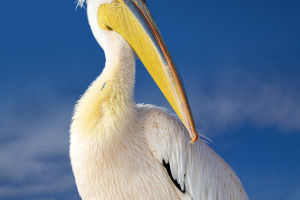Jellyfish are invertebrates that belong to the phylum Coelenterata and are important large planktonic organisms in the ocean.
Jellyfish are short-lived, averaging only a few months of life. There are more than 200 species of jellyfish in the world's oceans, and they are found in waters around the globe.
Jellyfish predate the dinosaurs, dating back hundreds of millions of years. They are diverse, with about 250 species of jellyfish worldwide, ranging from 10 cm to 100 cm in diameter, commonly found in oceans everywhere.
Jellyfish bodies are 95% water and have no bones or muscles, so they are soft, and most species are transparent or translucent, like jelly, and very elastic.
Jellyfish mainly feed on plankton in the ocean. The abundant food resources in the ocean make jellyfish grow rapidly, and they can grow to several meters long and weigh several tons in two to three months.
Jellyfish have a well-developed sense of hearing, and when they hear infrasound from storms or tsunamis thousands of miles away, they hide early in the relatively calm depths of the ocean to avoid being shattered by the ferocious waves.
Jellyfish have a strong ability to tolerate low oxygen. In many places in the ocean, the oxygen content in the seawater drops to a very low level due to pollution or geological changes, and other marine organisms are unable to survive, but jellyfish can flourish in the sea which can be called ocean desert.
The jellyfish is a cellular animal with a simple structure and no muscles or skeleton, how is the light on its body formed?
The principle of jellyfish luminescence is different from that of other animals, as most other animals glow through luciferin and luciferase catalyzed by oxygen. Jellyfish glow by a kind of magical protein called Equilin, this protein encounters calcium ions and can send out strong blue light. According to scientists, each jellyfish contains about 50 micrograms of luminescent protein.
The main component of the jellyfish body is water and is composed of two inner and outer embryonic layers, between which there is a very thick mesocolloid layer, which is not only transparent but also has a floating effect.
When they are in motion, they use their bodies to reflect the water to move forward, and from a distance, it looks like a round umbrella drifting rapidly in the water.
When jellyfish come out in groups at sea, they live closely together as a whole and float deeply on the surface of the sea, which looks very spectacular.


